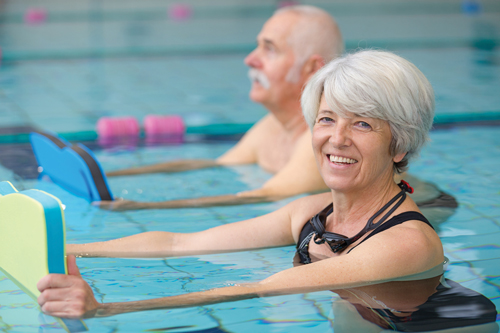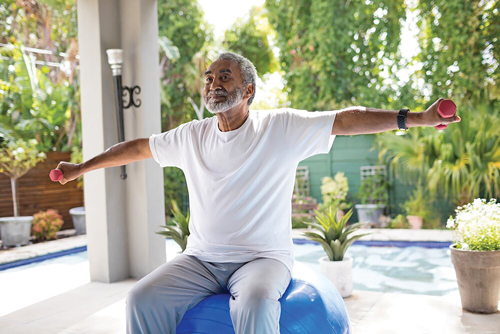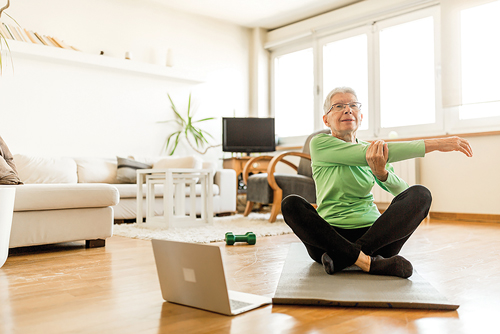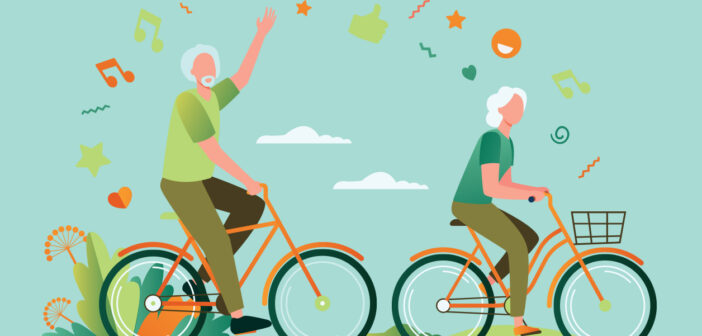Let’s face it: being active throughout one’s life takes work. The temptation to plop into a chair and watch our favorite shows or sporting events for hours on end is strong and even stronger when we are dealing with the natural aches and pains of aging. To further complicate matters, the more we remain sedentary, the harder it is to get up and get moving. Believe it or not, as we age, it’s movement and exercise that – depending on their severity – can help lessen our aches and pains.
For increased longevity and life fulfillment, exercise is the name of the game. Seniors should strive to be as active as possible. Increased daily exercise means more independence and energy, improved balance and brain function, lower blood pressure, and protection from disease. With more exercise comes a better chance you will continue (or once again) be able to enjoy the hobbies and passions of your entire life – dance again, golf again, run or cycle again. In order to dominate the church pickleball league or enjoy a long nature hike at an age over 65, exercise and movement are key.
Here are 5 low-impact exercises to help seniors get moving.

1. Jump in the Pool
Water aerobics remains the top exercise programs for seniors due to the fact that not only is it fun but, more importantly, is the ideal workout for those with arthritis, joint and muscle pain. The natural resistance of water can help build muscle and tone without the added stress on the body or cost of weights. For cardio, swimming laps is an extremely low-impact, full-body workout that can increase lung capacity, muscle tone, and strengthen the heart. Standard water exercises include aqua jogging, flutter kicks, leg lifts and arm curls. Perhaps one of the best advantages of water aerobics is its accessibility. Nearly every health club with a pool has a program available for seniors and it is perfect for those new to exercise or starting to get active again.
2. Release Your Inner Strength
Tai Chi is known as “meditation in motion.” It combines mindfulness with movement to increase one’s awareness of space. Originating in China as a martial art form, it combines slow, gentle movement with controlled breathing and meditation. It is very low-impact and has been shown to increase balance and prevent falls in older adults and those diagnosed with Parkinson’s disease. Tai Chi has been reported to decrease back pain, knee osteoarthritis and fibromyalgia. It can lower blood pressure, improve symptoms of cardiovascular disease and increase confidence and happiness.

As we age, it’s movement and exercise that can help lessen our aches and pains.
3. Engage Your Core

One of the best ways to alleviate pain and strengthen the body is to improve strength of the muscles and flexibility in the trunk of the body. One way to do this is with a low-impact Pilates workout. The regimen was developed by Joseph Pilates to help dancers recover from repetitive-movement injuries. A little more intense than the gentle movements of Tai Chi, Pilates concentrates on the abdominal and lower back muscles during flowing movement patterns and controlled breathing. It’s a very good step for a senior looking to get back to being active. Pilates can improve muscle tone for greater stability, readying the muscles of the body for increased exercise in the future. It will also help improve stability, balance and coordination.
4. Get Out & About

Once you have improved your stability, balance and muscle tone, it may be time to head outside. One of the simplest and most effective exercises for the body and mind is a walk in the neighborhood or in nature. Walking benefits your body in nearly every way possible and walking outdoors has been identified with lower depression and worry, and higher life satisfaction and happiness. Re-connection with the outside world through the simple act of taking a walk can reestablish the link to joy that many have lost or forgotten. One study has shown that taking a minimum of 10,000 steps a day can lower a person’s ten-year outlook for mortality by 46%. Walking, if possible, is a win-win.

5. Add the Resistance
Slightly over a third of seniors in the U.S. have sustained muscle loss. Loss of muscle in advanced age can lead to increased pain, lack of mobility, loss of passions and hobbies, and hormonal complications. If a person has been able to increase their balance and movement, lower blood pressure and enjoy their favorite pastimes again (dance, sports, etc.), it may be time to take the next step in the exercise journey. Body-weight workouts can be intense or moderate. They are inexpensive (requiring only clothing and perhaps, a floor mat) and can ultimately be effective without the stress created by physical weights. Using the body’s natural resistance, seniors can begin to build muscle for even more activity. Push-ups, squats, hip-dips, controlled kicks and punches, and other exercises can help a senior reach peak health and ability.
If you are over 65 and suffering from pain and health issues, please consult your physician before beginning any exercise program. When you are ready to be more active, there are programs of varying intensities designed just for you to help you get back on your feet. In this day and age, there are no excuses, outside of chronic conditions or diseases, to not be more active! That show streaming on TV can wait … but the rest of your life cannot.














